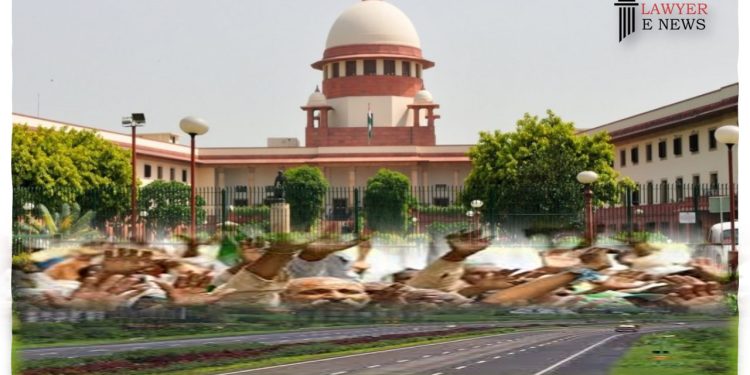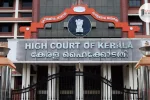Speedy Resolution of Land Acquisition Cases – Supreme Court

On this Wednesday, Supreme Court observed in (Ravinder Kumar Vs State Of Haryana D.D 15 Feb 2023) that smaller extent of land but unfit for cultivation and more suitable for non-agricultural purposes due to urbanization. In such cases, the land must be treated as having non-agricultural potential for urban use.
Facts
Land losers divested from their land for the construction of an Express Highway have been struggling to receive just and fair compensation for nearly two decades. Appellants are before the Court for the second time, and their lands were notified under the Land Acquisition Act, 1894, for the construction of Express Highway Phase VII in Gurugram.
The market value was fixed by the District Revenue OfficercumLand Acquisition Collector, Gurgaon, at Rs.12,50,000/ per acre. The Reference Court enhanced it to Rs.43,17,841/ per acre, which was further enhanced by the High Court to Rs.62,11,700/ per acre.
The Supreme Court remanded the cases to the Reference Court in 2018 for fresh evidence and a new decision.
The Reference Court determined the market value at Rs.22,00,754/ per acre, which was modified by the High Court to Rs.14,52,010/ per acre, and the land losers appealed to the Supreme Court for further enhancement of the market value.
Arguments
The land losers’ contention is that the lands under dispute are situated in an urban area with non-agricultural potential. Therefore, the market value cannot be determined by considering them as agricultural land or by applying the yardstick applicable to large tracts of agricultural land. The landowners argue that the floor rates fixed by the government do not justify the market value determined by the High Court, and evidence had been adduced wherein sale exemplars were relied on. The only error committed by the Reference Court is to deduct 35% of the value towards development charges, which would not be justified as the entire acquired land has been utilized for the purpose of constructing roads.
The beneficiary of the acquisition contends that the Reference Court was not justified in placing reliance on the document related to the purchase of a small extent. Relied on nine sale exemplars between the period 23.07.2004 and 25.11.2005 wherein the larger extent of agricultural land had been sold, and the value per acre in all instances was lesser than the floor rate. The High Court has adopted the market value determined by LAO, which was Rs.12,50,000/, and added the escalation for the period between the date of the circular indicating the floor rates and the date of the notification. The High Court has assigned appropriate reasons and has determined the market value and awarded just compensation. Therefore, HSIIDC contends that the judgment does not call for interference.
Observation And Held
Supreme Court observed that the acquisition notification was issued for a large extent of land, but the majority of landowners had a small extent of land. In the case of large extents of agricultural land sold for agricultural purposes, the price would be based on the nature of the land and the purpose for which it is used. To arrive at the market value, the capitalization method could be adopted, or the market value could be determined based on comparable exemplars.
Supreme Court further observed that the difficulty arises when a person holds a smaller extent of land, classified as agricultural land but unfit for cultivation and more suitable for non-agricultural purposes due to urbanization. In such cases, the land must be treated as having non-agricultural potential for urban use. Therefore, the location and extent of land held by each landowner who is a part of the same acquisition must be kept in view while determining the appropriate exemplar.
Supreme Court said that there is no straight jacket formula for determining the exemplar as it depends on the comparability of each case, which is for the court to analyze based on the evidence available on record.
Supreme Court also observed that the lands in question are within the boundaries of the Municipal Corporation, and no crops were standing on the land, making it suitable for urban development. The sale deeds of agricultural land cannot be relied upon unless they are comparable to the lands notified for acquisition. The most appropriate document to be relied upon from the documents presented by the land losers is the sale exemplar dated 07.12.2004 since it was earlier to the notification under Section 4 of Act, 1894 and in close proximity to it. Therefore, the Reference Court was justified in reckoning it, and further addition of escalation value for 35 days was not necessary.
Supreme Court addressed the issue of excess compensation paid to some land losers in the first round of the case and determined that any excess amount received is recoverable, regardless of whether the land loser has already received it. However, the court directed that the balance to be refunded shall be paid back in three half-yearly installments, free of interest. If the amount is not refunded within the specified time, the same shall thereafter carry interest at 9% p.a., and the respondent-HSIIDC would be entitled to recover the same, including the right to make recovery as arrears of land revenue.
Supreme Court set aside the judgment passed by the High Court and restored and modified the judgment passed by the Reference Court and ordered the market value of the acquired land was ordered to be Rs. 25,20,000/- per acre, payable with statutory benefits and the costs incurred throughout by the appellants. The appeals were allowed in part.
Ravinder Kumar
Vs
State Of Haryana





